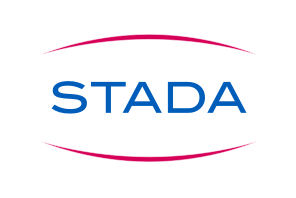Your Body
Using osteoporosis treatments correctly
Have you been diagnosed with osteoporosis? The good news is: Effective treatments are available for osteoporosis today. You can contribute decisively to this – provided you comply with the requirements and indications for treatment. This is the only way to ensure good efficacy.
Your doctor has surely spoken with you about the treatment. He/she described the various forms of osteoporosis treatment to you: the therapy with and without medication. It is important to adhere to the treatment plan exactly.
What do you have to pay attention to with a medication treatment for osteoporosis?
Medication against osteoporosis either has the purpose of preventing further bone loss or promoting bone growth. In most cases, the doctor recommends the additional intake of calcium and vitamin D, and sometimes also fluorides. When taking the medication, it is important to adhere to the instructions exactly. This is the only way to ensure the medication will have the desired effect. In addition to this, each active agent has more instructions for use:
- Bisphosphonates: Bisphosphonates are intended to prevent or stop bone loss and strengthen the remaining bone mass. The patient receives this medication in the form of tablets, an injection or by means of infusions.
- Receptor Activator of Nuclear Factor Kappa B Ligand (RANKL) inhibitor (e.g. Denosumab): The agent inhibits bone loss. Denosumab is injected subcutaneously twice a year.
- Parathormone (e.g. Teriparatide): The teriparatide agent, a "parathormone fragment", is identical to the body's own hormone, parathormone. It is the most advanced treatment method as it not only slows down the bone loss but also promotes bone formation and allows the development of new bone structures. Application method: normally, once a day, in the form of an injection.
- Selective oestrogen receptor modulators (SERMs): SERMs are designed to reduce susceptibility to fractures. They are intended for women with osteoporosis during menopause. Two of them are raloxifene and bazedoxifene, they also inhibit bone loss.
- Strontium ranelate: Strontium is stored especially in newly-developed bones. Strontium ranelates (usually in powder form) are intended for patients suffering from severe osteoporosis and with a high risk of fractures; especially for women at the end of menopause or after menopause, and for adult men who cannot use other osteoporosis medication.
What do you have to pay attention to with a medication-free osteoporosis treatment?
- Enough exercise: Especially if you are not used to exercising, discussing with the doctor exactly how much exercise is good for you is important. Initially, have a physiotherapist accompany you. Exercise daily.
- Wholefood diet: Take 1,000 milligrams of calcium a day and sufficient phosphate in the right ratio to this. Especially when taking certain osteoporosis medication (such as bisphosphonates), be sure to take a daily dose of vitamin D3, ranging from 800 to 1,000 international units (IU). However, for some ailments such as kidney stones, additional calcium intake by means of tablets are not recommended.
- Avoid falls: Muscle strength declines with age. Pay special attention to strengthening your leg muscles, for example through targeted weight training. Work on your sense of balance. Have your eyesight and hearing checked at regular intervals.
Physical measures can provide support or alleviate pain. These include:
- Cold therapy or thermotherapy
- Massages
- Acupuncture


